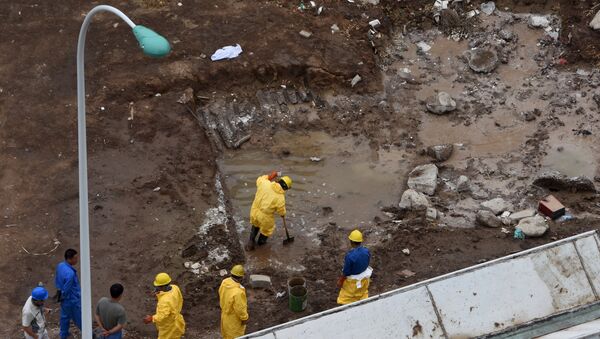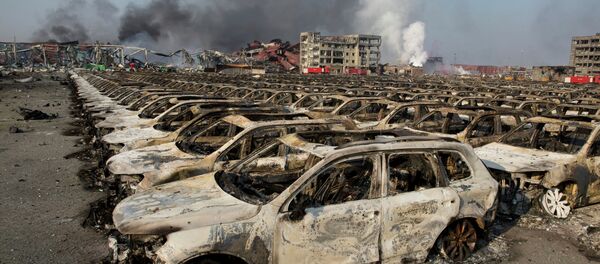"An excessive level of cyanide was detected in eight locations with the highest reaching 356 times the legal limit," said an official from Tianjin's Environmental Protection Bureau, which conducted tests on Tuesday of the water at 25 sites in the area immediately around the blast.
At least 114 people were killed and more than 60 people are still missing as a result of explosions last week at a storage facility containing 2,500 tons of hazardous goods, including about 700 tons of sodium cyanide, far more than the 10 tons allowed under Chinese law.
Large amount of fish found dead in river 6km from #TianjinBlast site, cause under investigation: local official Thu pic.twitter.com/m2XisxiF2J
— People's Daily,China (@PDChina) 20 августа 2015
The local government in Tianjin ordered the evacuation of thousands of people from the immediate vicinity in the aftermath of the blast, which sparked fears of toxic contamination of the air and water in the city of Tianjin, which has a population of 15 million.
After a test by health authorities, the city's drinking water was determined to meet national standards, while additional tests conducted on samples of rainwater that fell on Tianjin on Tuesday did not detect cyanide in the rainwater, lessening fears that rainfall may spread the toxic pollution further.




